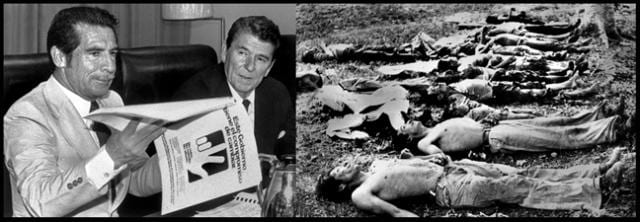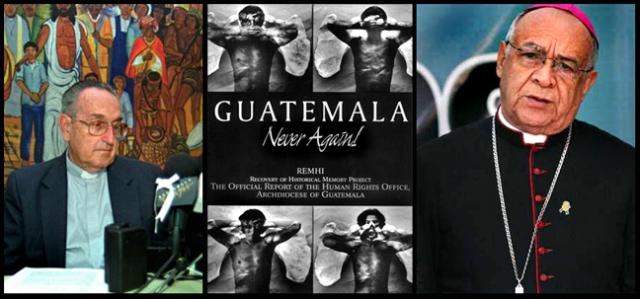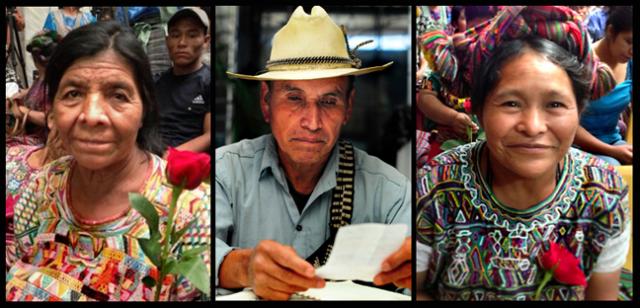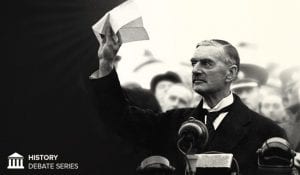Argentina’s General Videla and the “war on terror”
By Bill Van Auken, wsws.org
Gen. Jorge Rafael Videla died May 17 at the age of 87 as the result of injuries suffered from a fall in a prison shower. He was remembered as the head of a savage military dictatorship that between 1976 and 1983 murdered and “disappeared” some 30,000 Argentine workers, socialist militants, teachers, students and others perceived as “subversives,” while torturing at least 100,000 others. In his own country, newspapers that once backed his rule condemned him as a dictator and practitioner of state terror.
Yet one cannot help but suspect that within the military and intelligence apparatus in the US and Latin America—not to mention among the ruling financial interests that he served—the aged general’s passing has been mourned.
He was, after all, a pioneer in the “war on terrorism,” writing the textbook on methods of extra-constitutional rule, repression and state violence that have been largely embraced by ruling circles in Washington and elsewhere. Undoubtedly, there are those engaged in this line of work today who see him as something of a visionary.
 Three days before his death, the ex-dictator appeared as the principal defendant before an Argentine court hearing charges relating to Operation Condor, a [US coordinated] joint endeavor by Latin America’s ruling dictatorships of the 1970s to hunt down and murder one another’s opponents, wherever they might be found.
Three days before his death, the ex-dictator appeared as the principal defendant before an Argentine court hearing charges relating to Operation Condor, a [US coordinated] joint endeavor by Latin America’s ruling dictatorships of the 1970s to hunt down and murder one another’s opponents, wherever they might be found.
As in previous trials, Videla claimed a loss of memory about the events of that period, while unconditionally defending the actions taken by his regime and the military as necessary in an “anti-terrorist war.”
Operation Condor involved the combined efforts of military regimes in Argentina, Bolivia, Brazil, Chile, Paraguay and Uruguay, with indispensable logistical support and military aid from the Pentagon and the CIA.
It resulted in the abduction and murder of a number of individuals seen as opponents of the dictatorial regimes. This included the Washington, DC car bomb killing of Orlando Letelier, the former Chilean foreign minister in the Allende government, the assassinations of former Bolivian president Juan José Torres and former Uruguayan deputies Héctor Gutiérrez and Zelmar Michelini in Buenos Aires, and the assassinations of former Brazilian presidents Joao Goulart and Juscelino Kubitschek, whose deaths were made to appear, respectively, as a heart attack and a car accident.
In official US parlance, the methods employed under Condor are known as “rendition” and “targeted assassinations.” They would be well understood by today’s CIA and special operations personnel.
All of the Condor regimes were staffed by senior military personnel who had been trained at the Army’s School of the Americas in Panama and other US military facilities, and all of them had US military advisers, received substantial US military aid, and hosted well-staffed CIA stations.
Previously secret State Department documents make it clear that Washington understood Videla’s intentions from the beginning and fully supported them. One of these documents records an exchange between then-Secretary of State Henry Kissinger and his assistant secretary of state for Latin America, William Rogers, two days after Videla seized power.
Rogers told Kissinger that Washington must “expect a fair amount of repression, probably a good deal of blood, in Argentina before too long. I think they’re going to have to come down not only on the terrorists but on the dissidents of trade unions and their parties.”
While Rogers suggested delaying official recognition of the junta out of public relations concerns, Kissinger ordered full US support. “Whatever chance they have,” he stressed, “they will need a little encouragement from us.”
Among those involved in implementing this policy in 1976 were Richard Cheney, then the White House chief of staff, and Donald Rumsfeld, who was defense secretary. Twenty five years later, both would reemerge as principal architects of the US “global war on terror.”
With Washington’s blessing, Videla and his fellow officers set about what they dubbed the “process of national reorganization,” or el proceso.
Among its first steps was the suspension of basic democratic rights, including habeas corpus guarantees against imprisonment without charges or trials. The dictatorship outlawed unions and political parties and disbanded the legislature. Strikes and protests were turned into grave crimes against “national security.”
A network of clandestine prisons was set up, including the notorious dungeons of ESMA (the Navy School of Mechanics), the army’s Campo de Mayo, and scores of others scattered across the country. There, detainees were subjected to vicious forms of torture, including beatings, electric shocks, prolonged submersion in foul water, forced denial of sleep, extreme temperature and noise, attacks by trained dogs, simulated executions and sexual torture and humiliation.
Virtually all of these methods came into common usage at Guantanamo, Abu Ghraib and CIA “black sites” across the globe a quarter of a century later.
After being subjected to torture, the great majority of the victims were murdered, many of them drugged, loaded onto military aircraft and dropped naked to drown in the Rio de la Plata or the Atlantic Ocean.
The positive attitude of the US military toward the junta was reflected in an article appearing in the June 1978 edition of Parameters, the journal of the US Army War College, which noted approvingly that “General Jorge Rafael Videla, who heads Argentina’s military junta, has permitted the authorities to adopt more rigorous measures” against “terrorism.” It praised Videla as a “moderate committed to returning the country to democracy once the foundations have been established for stability.”
By this time, as one of the declassified State Department documents revealed, the official estimate of the number of Argentines murdered in this crusade for “stability” stood at 22,000.
Fully 40 percent of the junta’s victims were militant workers and union members. Torture centers were set up inside some of the country’s major factories, including a Ford auto plant. The Peronist union bureaucracy collaborated in this extermination campaign, helping to form death squads even before the military took power.
The repression had definite class and economic aims. The dictatorship managed to cut wages in half within its first year, reducing workers’ share of the national income from 48.5 percent to only 29 percent. Universal health care was abolished in favor of for-profit insurance companies, and other forms of social assistance were eliminated or drastically curtailed. In essence, the junta oversaw a vast transfer of social wealth from Argentine working people to the country’s ruling class, the transnational corporations and international finance capital.
This is not merely a matter of historical interest. Faced with the deepest economic crisis since the Great Depression of the 1930s, the ruling establishments in the US and internationally are attempting to effect a similar transfer of social wealth today. And, under the mantle of a “war on terror”—the same justification given by Videla—the US government, beginning with the Bush administration and accelerating under Obama, has already put in place the legal and institutional framework for Argentine-style repression.
The Obama administration has arrogated to itself the power to subject US citizens to indefinite military detention without charges or trials, i.e., to conduct “disappearances.” A White House that regularly draws up “kill lists” for assassinations and massacres abroad has specified that it can order such killings of American citizens residing within the US itself if it deems them “terrorist” enemies of the state.
Those who look at the horrors of Argentina under Videla’s junta and think, “It can’t happen here,” are only fooling themselves.
Bill Van Auken is a senior analyst with wsws.org, information arm of the Social Equality Party.








